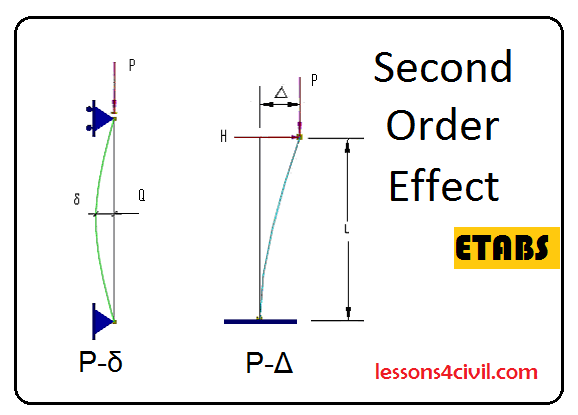P-δ and P-Δ effect
P-Δ effect and P-δ effect are usually two confusing terms for occasional ETABS users. In this article I am going to explain them in details and in our ETABS video coarse you can also learn have to apply them in the software.
P-Δ effect is one of phenomenon that influence on the behavior of the structure. in simple words P-Δ effect is when lateral displacement of the members causes an extra bending moment. It is also called the second order effect of lateral translation of the members.
On the other hand another technical term is P-delta (P-δ) which is a bit different. P-δ is when a member deflect in the middle. As a result, this curvature induces an additional bending moment causing even more lateral deflection. It is referred to the second order effect associated member curvature.
Another question you might ask is that what cases this lateral displacement? In reality loading is a combination of various vertical and horizontal loads. The structure is usually laterally loaded by earthquake, wind, soil and water pressure. If these lateral loads are large enough they can cause significant lateral displacement and initiate the P-δ (P-Δ) effect.
The basic concept of both technical terms are identical. These effects are not applicable for rigid bodies since both require lateral deflection. So whenever you are working with rigid bodies ( in static lessons for example) you do not need to be worried about P-δ effect.
Fortunately, structural software such as ETABS accounts for the effect of P-δ (and P-Δ ). In each software we need to take specific strategies to account for these effects. And if you are computing a member manually, the deformed shaped of the member should be used as the geometry of the problem.



Comments